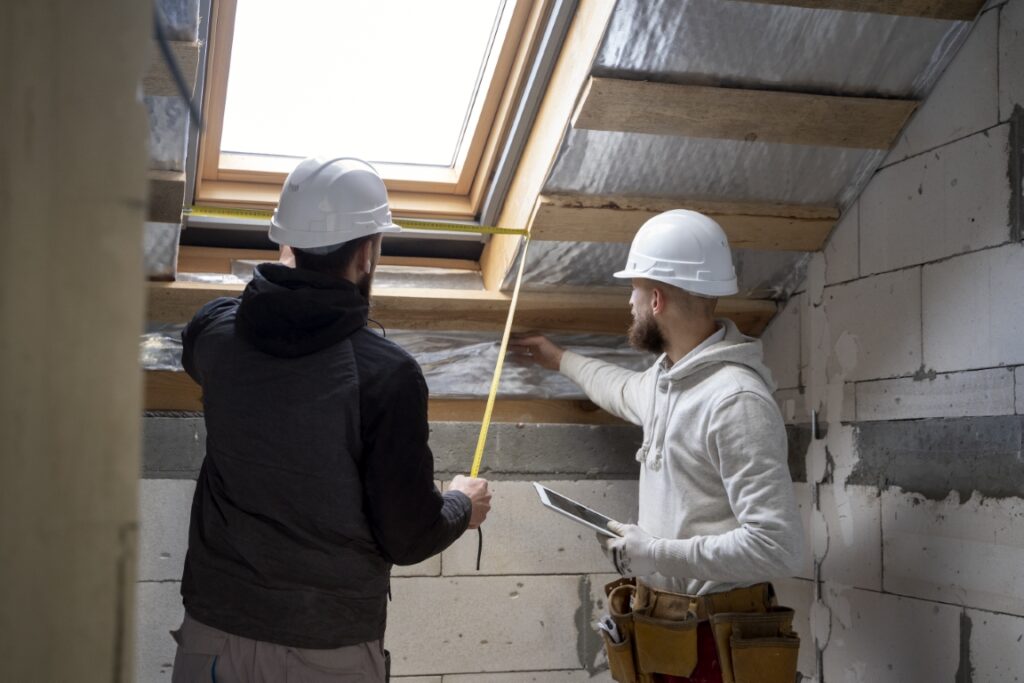
5 Key Areas to Inspect After a Storm: Simple Tips for Homeowners
After a major storm or hurricane, it’s natural to be concerned about your home’s condition. While the damage may not always be obvious, there are a few critical areas that could hide potential problems. Taking a little time to inspect these key parts of your home can help you catch issues early and avoid costly repairs later. Here are five essential areas to inspect after a storm—and how One Stop Handyman can help.
1. Roof
Your roof is the first line of defense against severe weather, and it’s often the most vulnerable part of your home. Even if your roof appears intact from the ground, storm winds can loosen shingles, damage flashing, or cause leaks that may not be visible right away.
What to look for:
- Missing, curled, or damaged shingles
- Debris buildup, such as tree branches or leaves
- Water stains on ceilings, indicating a possible leak
- Granules from shingles in gutters or downspouts
Tip: For a more thorough inspection, use binoculars to get a closer look at your roof from the ground, or hire a professional to safely check for hidden damage.
2. Foundation
Storms can create excess water around your foundation, which can lead to long-term structural problems if not addressed. Water pooling near your home’s foundation or new cracks in the walls could be signs of trouble.
What to look for:
- New or widening cracks in the foundation or exterior walls
- Water pooling around the base of your home
- Doors and windows that suddenly stick or don’t close properly (a sign of shifting foundation)
Tip: If you notice significant cracks or water pooling, it’s best to have a professional evaluate the foundation to ensure your home’s structural integrity.
3. Windows and Doors
Windows and doors are vulnerable to wind and flying debris during a storm. Even if there’s no visible glass damage, high winds can loosen seals, misalign frames, or create drafts, which can affect your home’s energy efficiency.
What to look for:
- Cracked or broken glass
- Gaps or drafts around the window or door frames
- Difficulty opening or closing windows and doors
- Broken or missing window screens
Tip: Be sure to check the caulking around windows and doors as well, as this can loosen during a storm, letting water and air in.
4. Siding
The siding on your home is another area prone to damage from high winds and debris. Damaged or missing siding can allow water to seep into the walls, leading to rot, mold, or interior damage over time.
What to look for:
- Cracks, holes, or missing panels
- Dents or chips in vinyl or aluminum siding
- Discoloration, which could indicate water damage underneath
- Mold or mildew on the siding
Tip: Even small cracks can allow water to get inside your walls, so it’s important to address any siding damage quickly.
5. Gutters
Your gutters play a crucial role in directing water away from your home’s foundation. After a storm, it’s common for gutters to get clogged with leaves, twigs, and debris, which can prevent proper water drainage and lead to foundation problems or roof leaks.
What to look for:
- Blocked or clogged gutters
- Loose or detached gutters
- Water overflowing from gutters during rain
- Signs of rust or wear
Tip: If your gutters are clogged or damaged, clear them out as soon as possible to ensure water flows freely away from your home. Regular maintenance can also help prevent future issues.
How One Stop Handyman Can Help
Inspecting your home after a storm can be overwhelming, and some damage may not be easy to spot. At One Stop Handyman, we offer professional post-storm inspections and repairs to give you peace of mind. Whether it’s repairing roof shingles, fixing damaged siding, or ensuring your windows and doors are secure, our team is ready to assist with fast, reliable service.
By addressing these issues early, you can prevent more serious (and expensive) problems down the line. Don’t wait until the next storm hits—contact One Stop Handyman for all your post-storm repair and maintenance needs.
Call us today at (305) 442-2799 to schedule an inspection, or visit onestophandyman.com to learn more about our services.